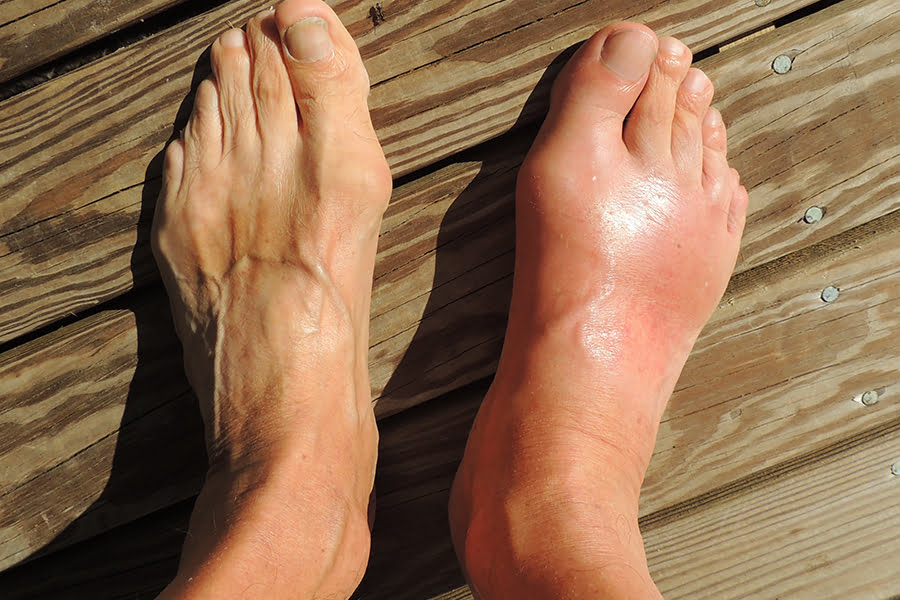
Gout is a form of arthritis resulting from a buildup of uric acid in the body. It causes attacks of painful joint inflammation, often described as burning pain. They generally manifest in only one joint, most commonly the MTP joint at the base of your big toe. Within eight to 12 hours, the joint becomes swollen, warm, and red. It can be so sensitive to touch that even the weight of a sheet causes excruciating pain. Attacks usually happen at night. The pain may go away on its own. It may take a few hours or it may take several weeks.
Attacks of gout may be erratic, there may be months in between them. Over time, the attacks increase in frequency and duration and they involve more joints. Eventually the pain doesn’t ever completely go away. The joints stay swollen and tender even between flare-ups, and the flare-ups start to happen every few weeks.
Gout is incurable, but it can be successfully treated.
Initial treatment of gout includes using colchicines, nonsteroidal anti-inflammatory drugs, and corticosteroids to decrease swelling in the joint and relieve pain. To get the best results from this course of treatment, it is best to start treatment during the first few days of the attack of gout.
In order to decrease the pressure in the affected joint, your doctor may aspirate the synovial fluid.
Certain lifestyle changes can help you manage gout:
- Eat a diet lower in meat and shellfish
- Avoid foods and beverages that are sweetened with fructose
- Eliminate the use of diuretics
- Lose weight
- Eliminate alcohol use
- Drink plenty of fluids to help your kidneys function more efficiently, as they work to eliminate excess uric acid from your system
- Avoid activities that stress your joints
If these basic steps do not alleviate the pain or reduce the frequency and severity of the attacks of gout, stronger pharmaceuticals will follow.
For more information on this subject, call The Zehr Center for Orthopaedics at 239-596-0100 or visit www.zehrcenter.com. The information contained herein is compiled from a variety of sources. It may not be complete or timely. It does not cover all diseases, physical conditions, ailments, or treatments. The information should NOT be used in place of a visit with your healthcare provider, nor should you disregard the advice of your health care provider because of any information you read on this topic.